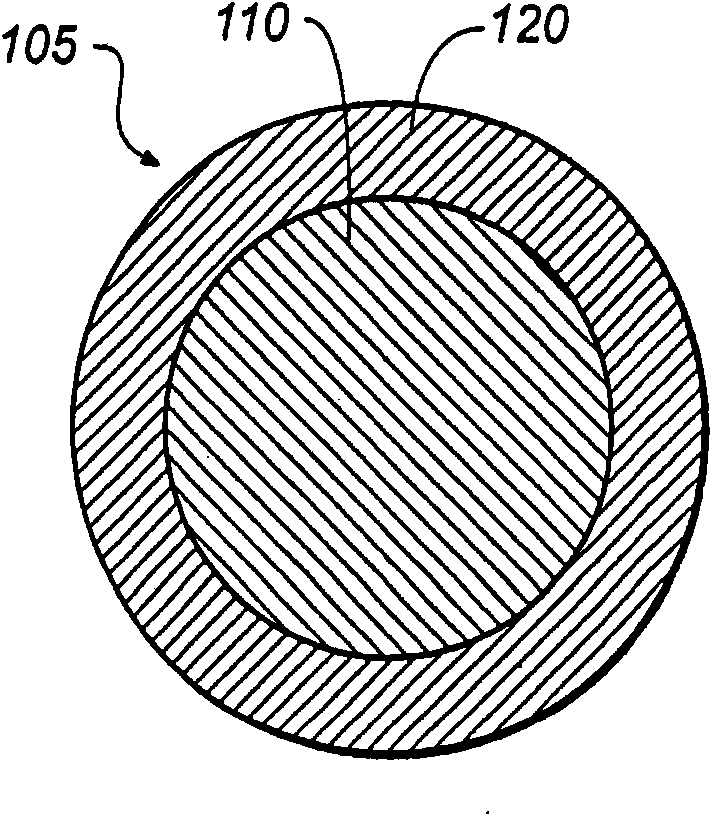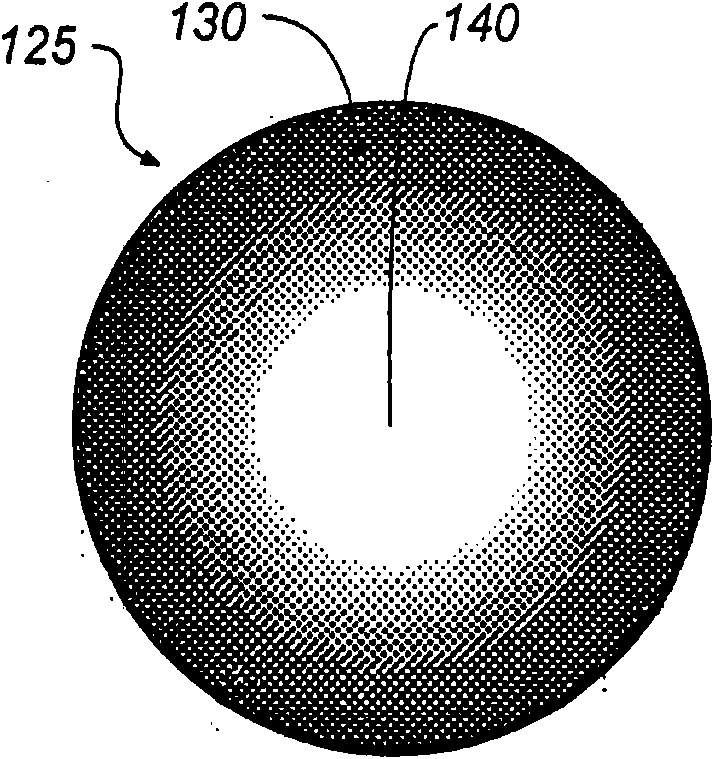Making colloidal ternary nanocrystals
A technology of nanocrystals and colloidal solutions, applied in crystal growth, chemical instruments and methods, single crystal growth, etc., which can solve the problems of unreported display of colloidal quantum dots and the inability of quantum dots to be widely used
- Summary
- Abstract
- Description
- Claims
- Application Information
AI Technical Summary
Problems solved by technology
Method used
Image
Examples
Embodiment I-1
[0061] Ternary core / shell non-scintillation nanocrystal Cd of the present invention x Zn 1-x Preparation of Se / ZnSe:
[0062] All synthetic routes were performed using standard air-free procedures using a dry box and Schlenk line. The first step in generating ternary cores is the formation of CdSe cores. Typically, 0.0755 g TDPA (1-tetradecylphosphonic acid), 4 g pre-degassed TOPO (trioctylphosphine oxide), and 2.5 g HDA (hexadecylamine) were added in a three-necked flask. The mixture was degassed at 100°C for half an hour. A 1 M TOPSe stock solution was prepared by dissolving 0.01 mol of selenium in 10 ml of TOP (trioctylphosphine). 1 ml TOPSe was added to the flask and the mixture was heated to 300°C. Quickly inject cadmium stock solution (0.06g CdAc in 3ml TOP) under vigorous stirring 2 ) to nucleate the CdSe nanocrystals, after which the temperature was set at 260 °C for further growth. After 5-10 min, the heat was removed and the flask was allowed to cool to room t...
Embodiment I-2
[0066] Ternary core / shell non-scintillation nanocrystal Cd of the present invention x Zn 1-x Preparation of Se / ZnSeS:
[0067] All synthetic routes were carried out using standard air-free procedures with a dry box and Schleck operating line. The first step in generating ternary cores is the formation of CdSe cores. In a three-necked flask, 0.2 mmol CdO and 0.5 g stearic acid were heated to 180 °C until the mixture was clear. In the dry box, 3ml HDA and 6ml TOPO were added to the mixture. On the Schreck line, the mixture was heated to 310°C with vigorous stirring, whereupon 1 ml of 1M TOPSe was injected. The temperature was then lowered to 290-300° C. and stirred for a further 10 minutes.
[0068] Thereafter a ZnSe shell is formed on the CdSe core. After cooling the original solution of this nucleus back to room temperature, it heated again to 190 degreeC. 260 μl of 1 M diethylzinc in hexane, 260 μl of 1 MTOPSe, and 2 ml of TOP were added in a syringe. The contents of ...
PUM
 Login to View More
Login to View More Abstract
Description
Claims
Application Information
 Login to View More
Login to View More - R&D
- Intellectual Property
- Life Sciences
- Materials
- Tech Scout
- Unparalleled Data Quality
- Higher Quality Content
- 60% Fewer Hallucinations
Browse by: Latest US Patents, China's latest patents, Technical Efficacy Thesaurus, Application Domain, Technology Topic, Popular Technical Reports.
© 2025 PatSnap. All rights reserved.Legal|Privacy policy|Modern Slavery Act Transparency Statement|Sitemap|About US| Contact US: help@patsnap.com



